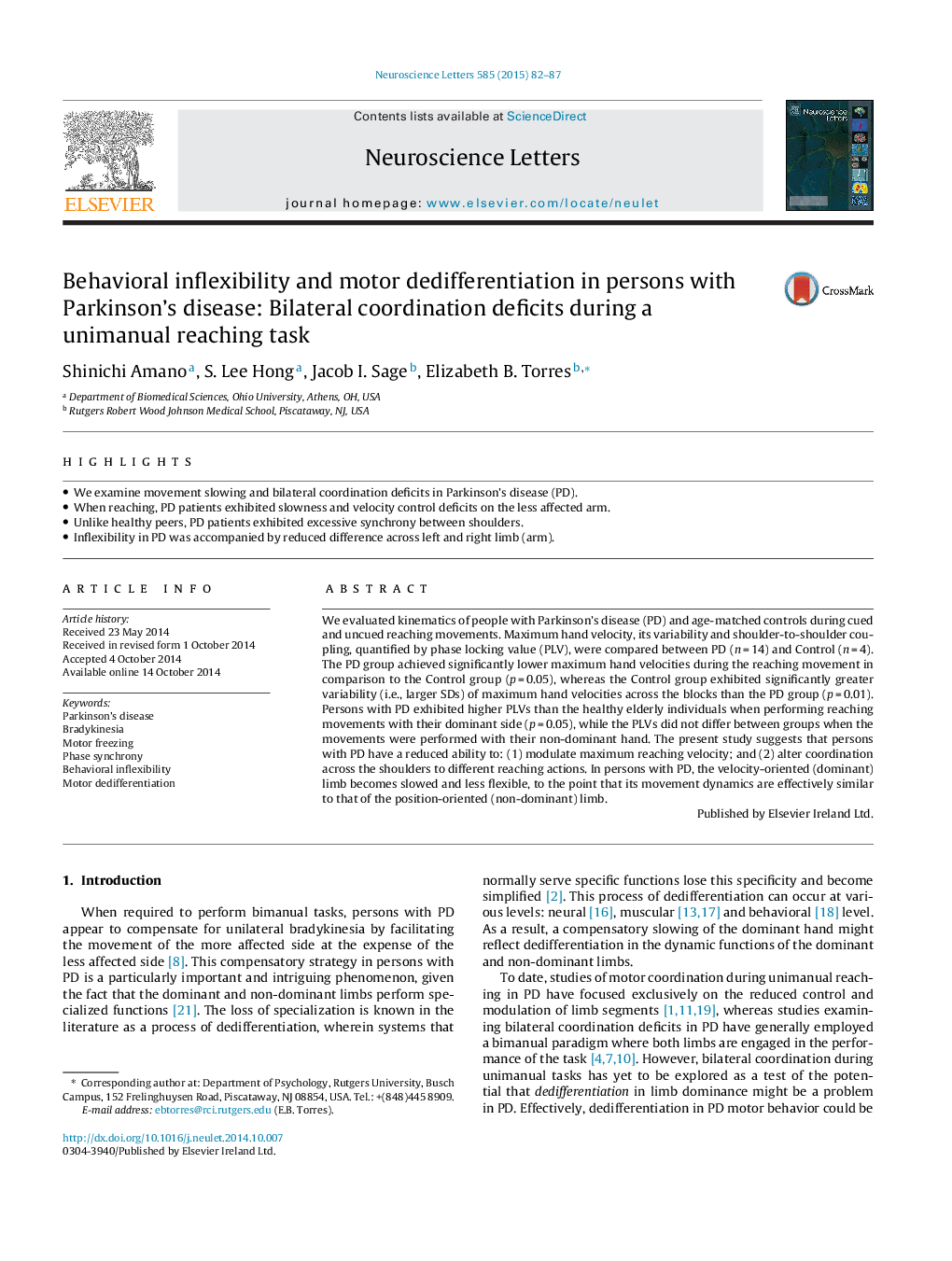| Article ID | Journal | Published Year | Pages | File Type |
|---|---|---|---|---|
| 6281175 | Neuroscience Letters | 2015 | 6 Pages |
Abstract
We evaluated kinematics of people with Parkinson's disease (PD) and age-matched controls during cued and uncued reaching movements. Maximum hand velocity, its variability and shoulder-to-shoulder coupling, quantified by phase locking value (PLV), were compared between PD (n = 14) and Control (n = 4). The PD group achieved significantly lower maximum hand velocities during the reaching movement in comparison to the Control group (p = 0.05), whereas the Control group exhibited significantly greater variability (i.e., larger SDs) of maximum hand velocities across the blocks than the PD group (p = 0.01). Persons with PD exhibited higher PLVs than the healthy elderly individuals when performing reaching movements with their dominant side (p = 0.05), while the PLVs did not differ between groups when the movements were performed with their non-dominant hand. The present study suggests that persons with PD have a reduced ability to: (1) modulate maximum reaching velocity; and (2) alter coordination across the shoulders to different reaching actions. In persons with PD, the velocity-oriented (dominant) limb becomes slowed and less flexible, to the point that its movement dynamics are effectively similar to that of the position-oriented (non-dominant) limb.
Related Topics
Life Sciences
Neuroscience
Neuroscience (General)
Authors
Shinichi Amano, S. Lee Hong, Jacob I. Sage, Elizabeth B. Torres,
